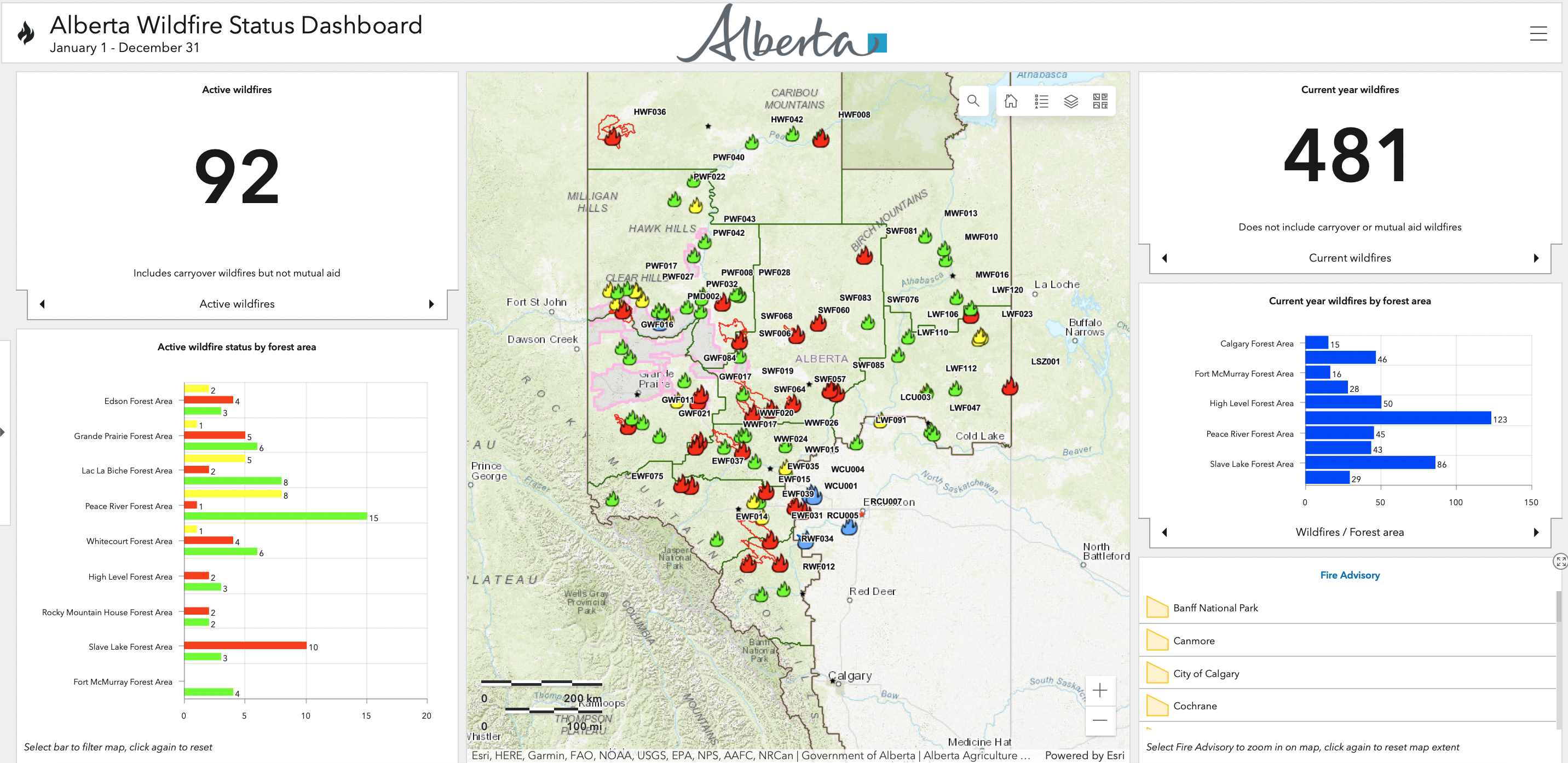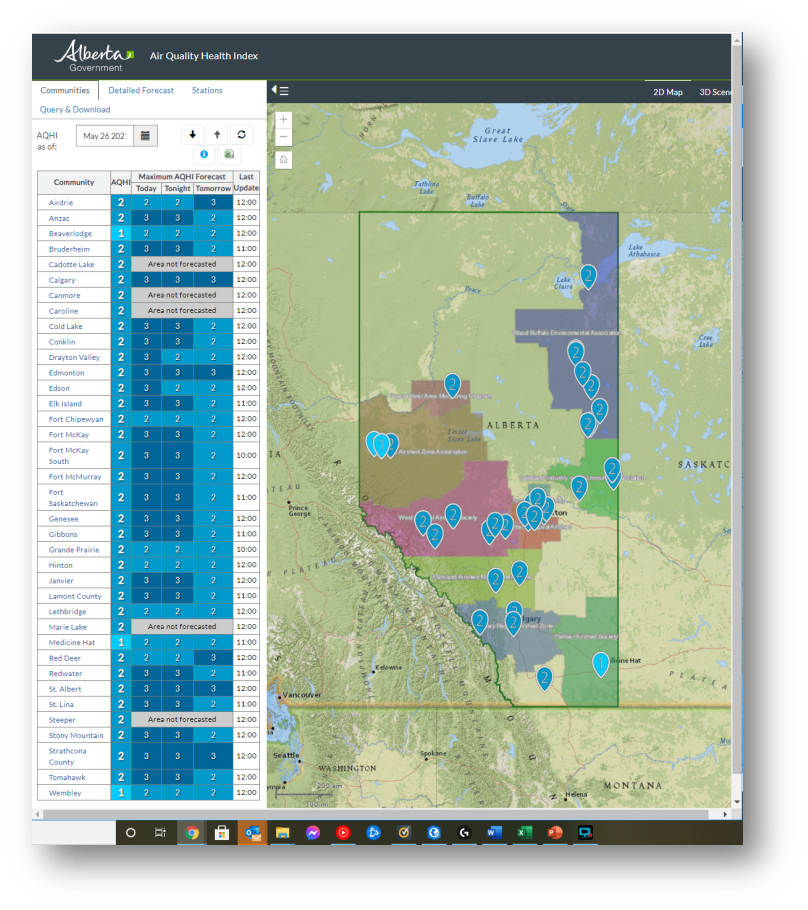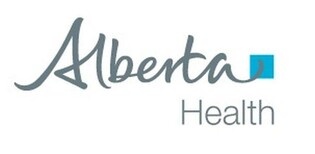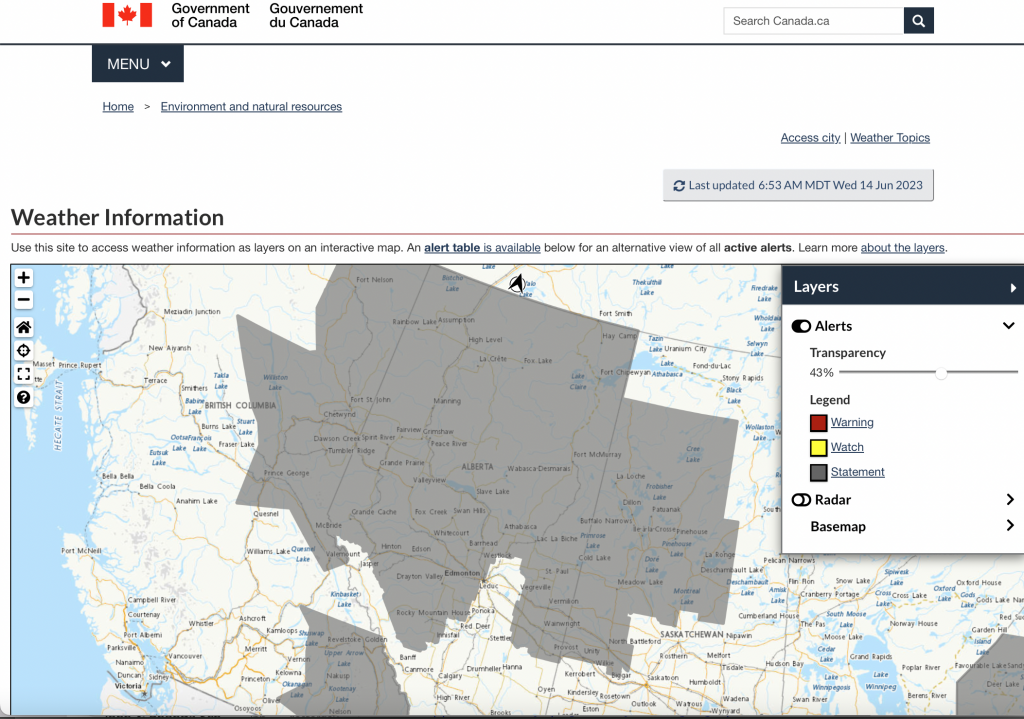Stay informed about active wildfires and wildfire smoke in the WCAS region, across Alberta, and throughout North America with these resources.
Listen to our radio ad:
“BlueSky” modelling for North America BlueSky is a software framework that consists of data and models of fuel consumption, emissions, fire, weather, and dispersion. These are linked together into a single system that produces forecasts of hourly ground-level concentrations of PM2.5 from wildfires up to 48 hours into the future. Twice per day, an animation is published that shows the forecast (or predicted) movement of smoke plumes and the corresponding one-hour PM2.5 concentrations.
Alberta Wildfire Status Dashboard The Alberta Wildfire Status Dashboard provides an overall look at the current wildfire situation across Alberta. The site includes locations of active wildfires, fire advisories, and wildfire status for each of the province’s forest areas. Alberta Wildfire provides links to report a wildfire, find the status and location of wildfires, fire restrictions and bans, and learn more about wildfire prevention.
Air Quality Health Index (AQHI) Up-to-date information about the air quality health index (AQHI) in the capital region can be found on the WCAS home page and province-wide on the Government of Alberta website.
Pay attention to information and direction from your local authorities and evacuate if told to do so.
Visit MyHealth.Alberta.ca for more Wildfire Resources, including how to mask safely.
Tips to keep your indoor air clean:
- Keep your doors and windows closed if the temperature in your home is comfortable.
- Close fresh air intakes from furnaces, fireplaces, or stoves.
- Turn on your air conditioning if you have it and set it to recirculate. Keep it running to help filter the air and keep your family cool (just remember that some air conditioning systems don’t filter the air or improve indoor air quality).
- If available, use an air purifier with a High Efficiency Particulate Air (HEPA) filter in a room where you spend a lot of time. Avoid air purifiers that produce ozone. Check the filter and change it if required. Click here for more information.
- Use humidifiers, which might help remove some of the smoke. The humid air can also help keep your nose and mouth moist.
- Reduce sources of indoor air pollution. If you can, avoid smoking or vaping indoors, burning incense and candles, frying foods, using wood stoves and vacuuming. Dust on indoor surfaces can be removed by wiping and wet mopping.
.
Health messages related to air quality are communicated to the public through the AQHI and the release of SAQSs. Smoke can occur in very localized areas and may not be picked up by AQHI stations. SAQS are used to inform the public of areas where potential smoke may occur causing poor air quality and reduced visibility. SAQs are issued by the Government of Canada directly via the Weather Alerts website or the WeatherCAN App.






